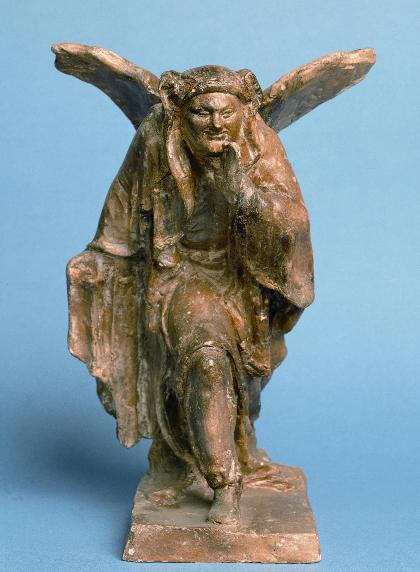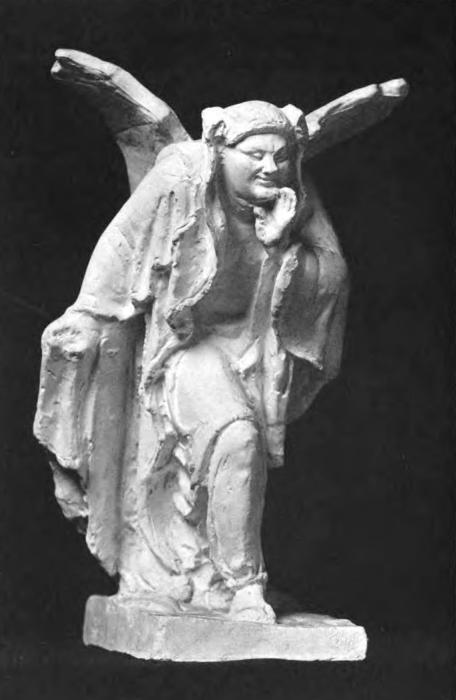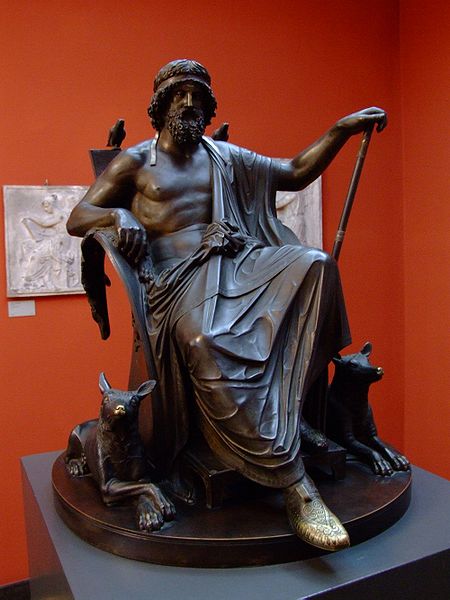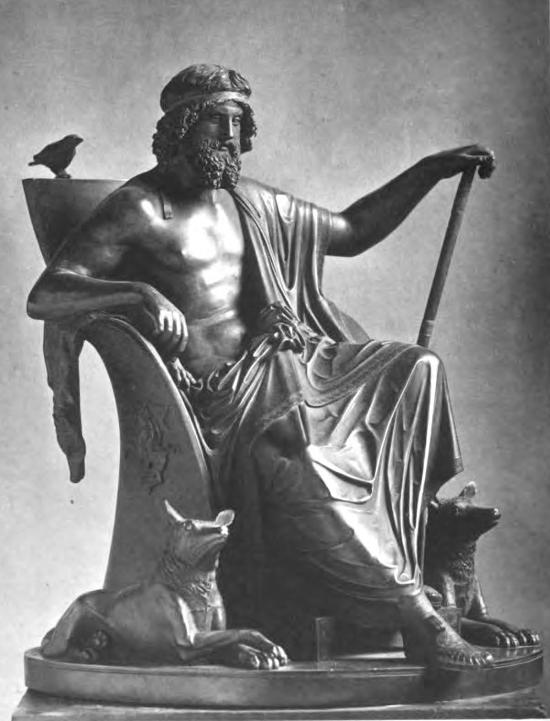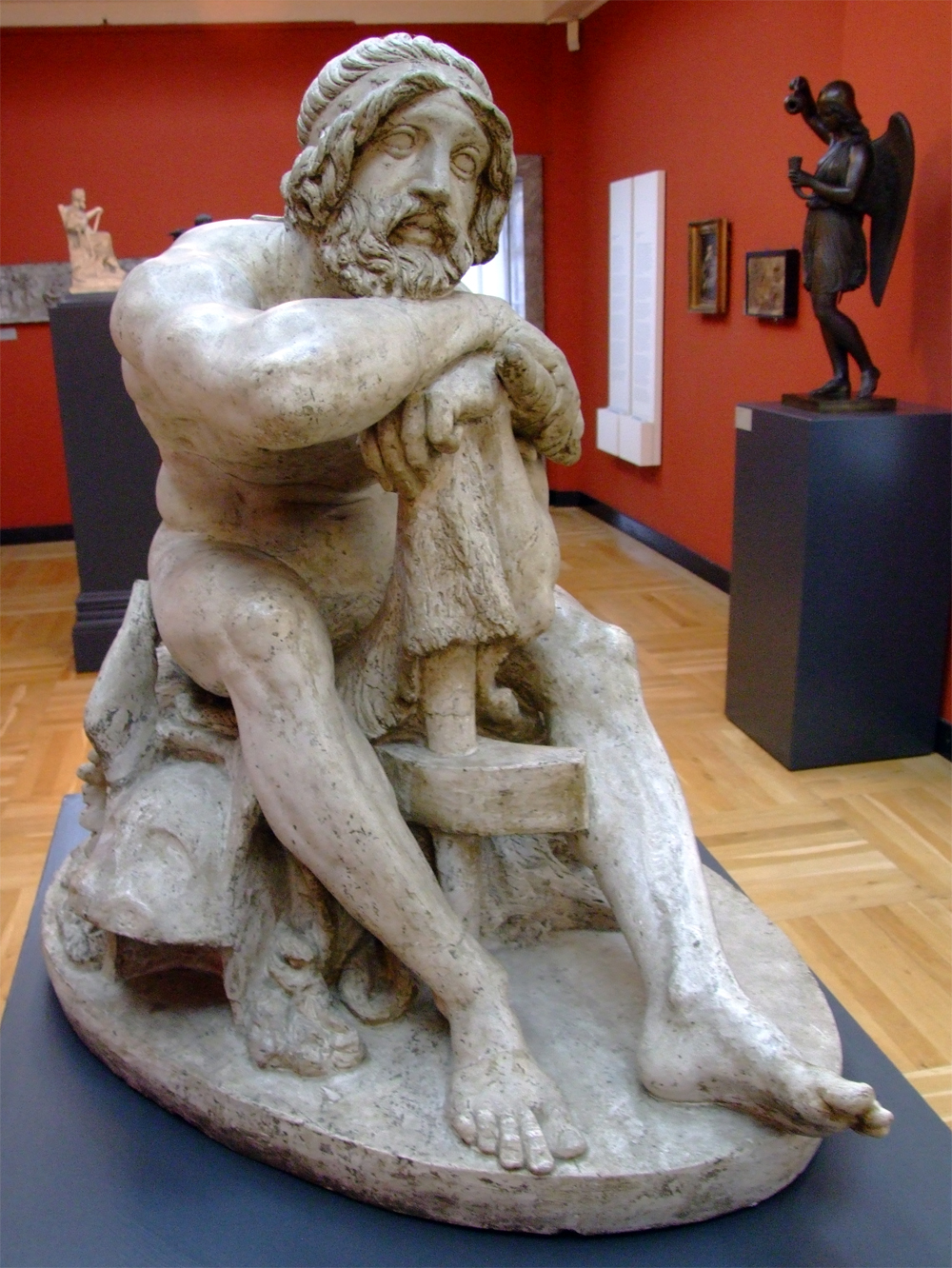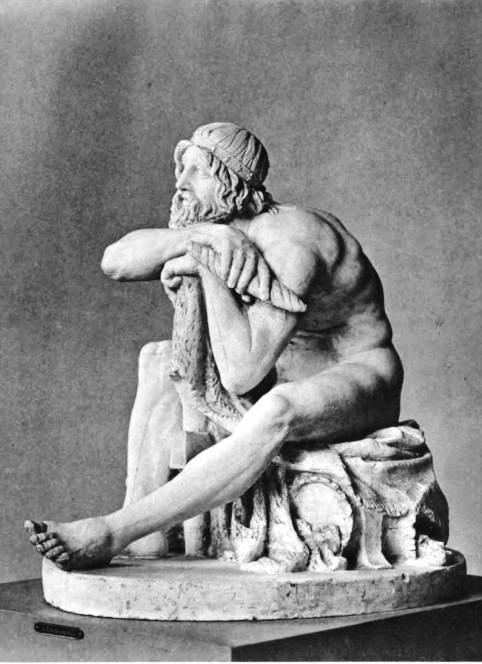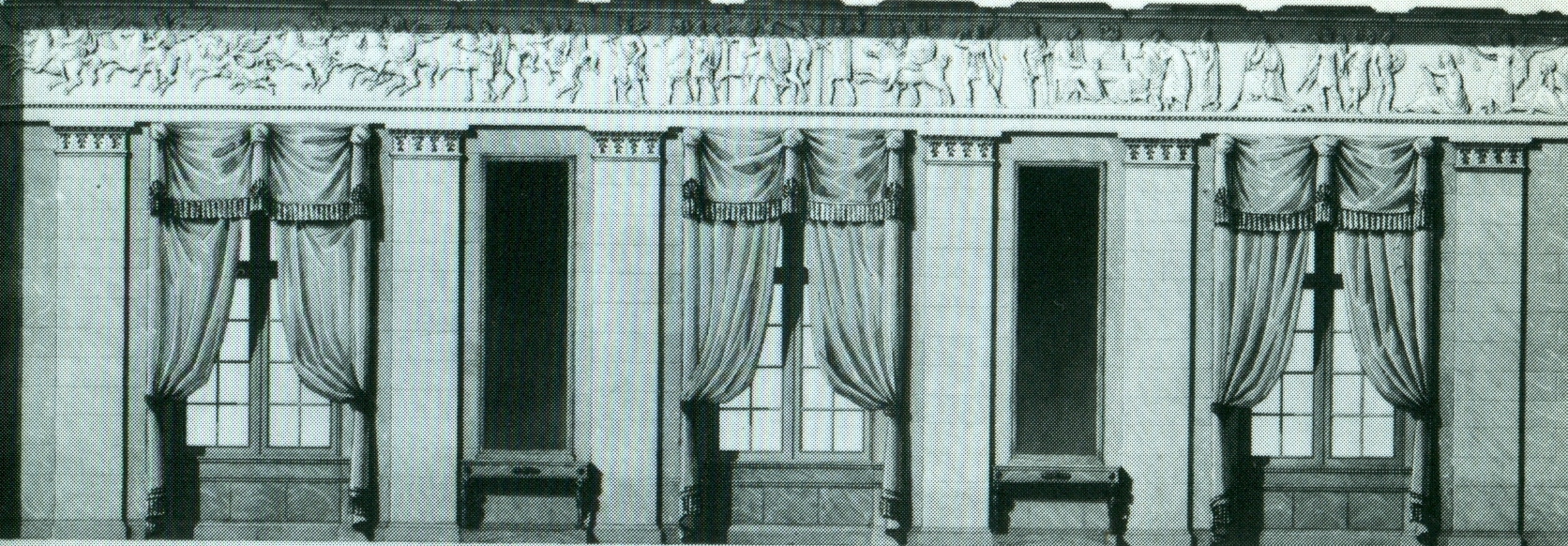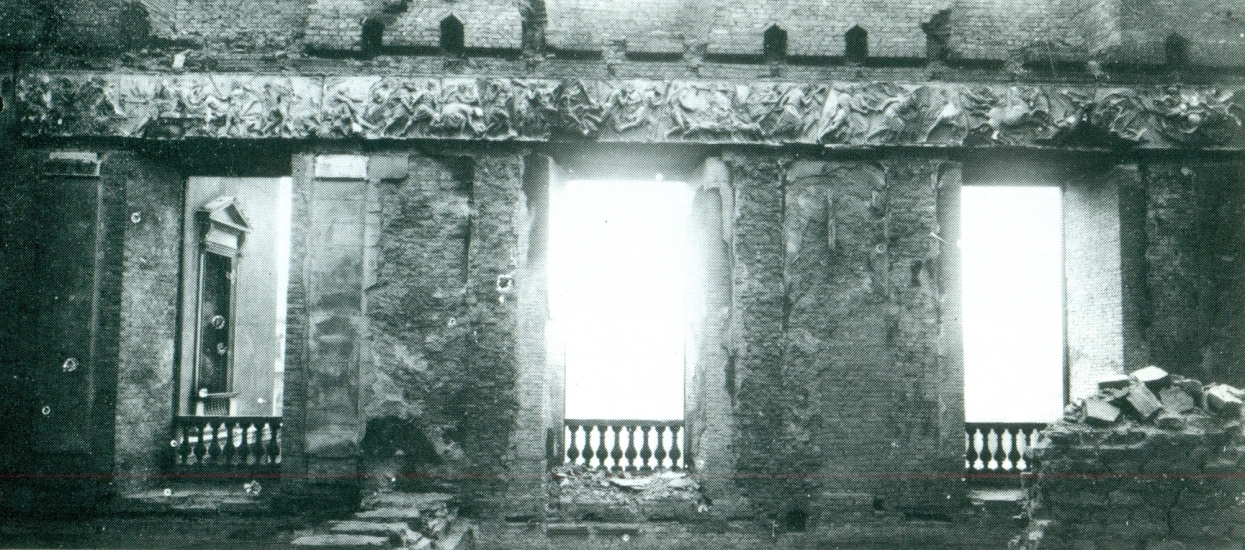Herman Ernst Freund
The Ragnarök Frieze
and other works
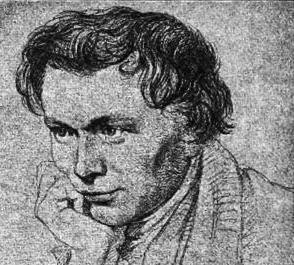
[HOME]
[POPULAR RETELLINGS]
|
Born in the city of Bremen, Hermann Freund, emigrated to Copenhagen in 1804, at eighteen, to escape conscription in Napoleon's army, and went to work in his uncle's workshop in that city, learning how to make locks. He soon left the smithy to work in the mint as an engraver, which left him more time to practice drawing and modeling in the Academy of Fine Arts in Copenhagen. Besides studying mechanics, anatomy and perspective, he loved to study history, mythology, languages and literature. When Copenhagen was bombarded in 1807 by the English, Freund took part in its defense. In 1811, he acquired Danish citizenship. A man of few means, Freund found nobody in Copenhagen to teach and guide him in his art. After graduating from the Art Academy, Freund spent ten years in Rome, where he became sculptor Bertel Thorvaldsen's closest assistant, before returning to Copenhagen. For several years Freund could not make up his mind whether to choose engraving or sculpture for his profession. In a letter from October 1820, Jonas Collin, the powerful secretary of the Fonden ad usus publicos, "Fund for Public Uses" (1803-1832), who knew Freund from his work at the mint and remained a faithful friend, suggested Freund attempt to treat subjects from Norse mythology. Collin joined forces with some famous artists in Denmark, who, as the Scandinavian Literary Society, offered prizes for artistic representations of Nordic mythology in Copenhagen in 1821. Collin personally sent his friend Freund an invitation to this competition along with a copy of Finn Magnusen's Poetic Edda (1821) and Adam Oehlenschläger's, new at the time, Nordens Guder (Nordic Gods, 1819). Freund took great interest and immersed himself in the books, which soon caught his imagination. During the winter of 1821-22, he modeled sketches for a series of 12 figurines from Norse mythology including Odin, Freya, Thor, Balder, Bragi and Idun. Some of the sketches are now known only through the copper engraving by S. H. Petersen. Freund won the competition for sculpture with sketches for statues of the Norse gods, of which only Odin was realizedin bronze on a small scale. |
||||
|
||||
1828 Odin On the sides and back of the chair are positioned four relief figures: Odin on Sleipnir and three Valkyries on horseback . 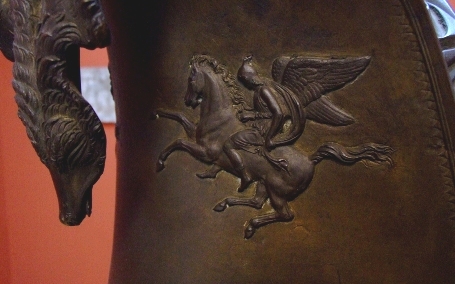 |
||||
|
||||
|
The Ragnarök Frieze [Click here for a panoramic view] |
||||
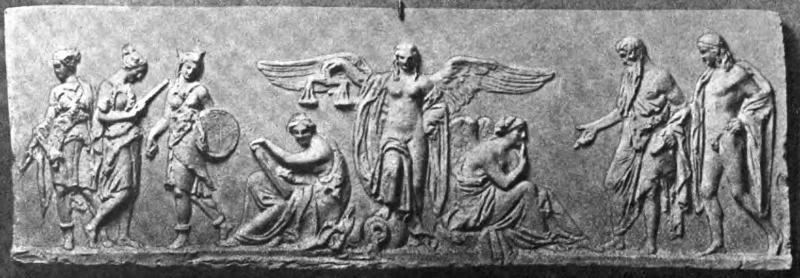 Mimir and Baldur (right) question the Norns (center). Three Valkyries stand to the left of the Norns. |
||||
| Freund also won the prize for his sketch for a relief of Mimir and Balder interviewing the Norns. But his design was much bigger: he proposed a frieze in which all the deeds and circumstances of the Norse gods, elves, giants, and dwarves would link together in an unending chain. However, space considerations within the Christiansborg Palace where the work was commissioned, forced Freund to limit the scope of the project to Ragnarök. He drew the models for his masterpiece, the "Ragnarökfrisen," in 1825-26. | ||||
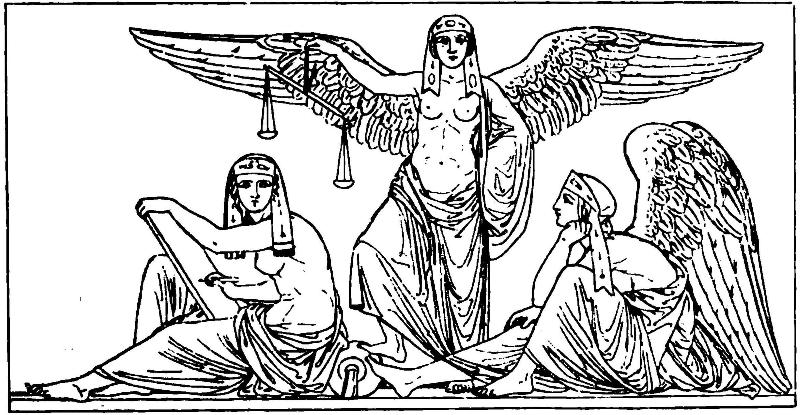 Sketch for the Norns 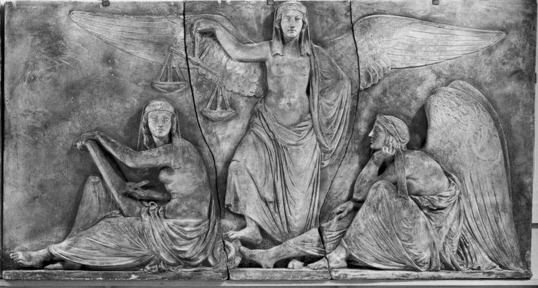 |
||||
|
The frieze presents a rich variety of scenes (see images below), gathered here from a number of sources. Begun in 1827, only one long side was installed in the Christiansborg Palace in Copenhagen when Freund died in 1840. The remaining three sides of the Ragnarök frieze were completed by Hermann Wilhelm Bissen in 1841-42. The frieze was destroyed by fire in 1884 and later restored using surviving sketches and from memory by his nephew Georg Christian Freund, who had assisted on the original as a young man. The Ragnarök frieze has been reproduced several times: in the Christiansborg Palace after it was rebuilt, at half scale for the Museum in Odense, at full size for the Glyptotheket, at a private mansion in Berlin, and in the "Ragnarök room" in the Carlsberg Museum.
H. Olrik sketched the entire frieze in 1857, preserving the full scope of the work. Click here for a panoramic view of Olrik's drawing. The following account describes the original frieze compiled from various published sources: We are first greeted by the three winged Norns at the Well of Urd. Urd and Skuld are sitting; Verdandi is shown standing. Urd, the Past, sits as Saga (the goddess of history), inscribing the march of time on her golden tablets; Skuld the Future, with her hand on her cheek, sits thoughtfully lost in dreams of things to come; Verdandi, stands nobley as the ever-present Now, holding the heavenly balance in whose scales the cause of the Aesir sinks, boding a mighty ruin. They are followed by three of Odin's maidens, who hear and proclaim destiny. |
||||
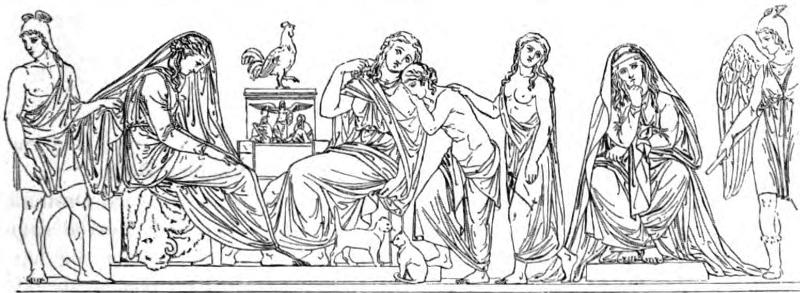 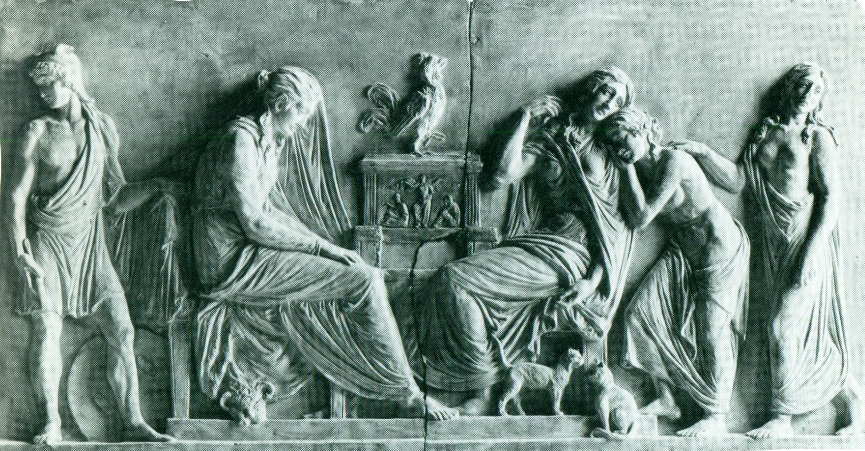 Frigg, Odin's wife, sits in silent mourning beside his throne. Hermod, the messenger of the gods, is at her side. In Odin's high seat Hlidskialf, the rooster Gullinkambi crows. Freyja, with cats at her feet, sits on the opposite side, crying and comforted by her two daughters. To her right sits Sif, the mighty Thor's wife. |
||||
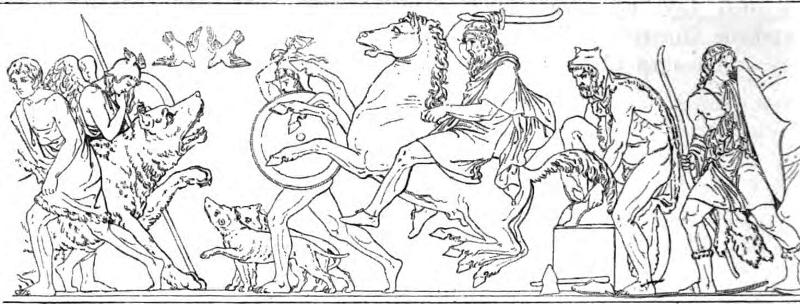 Odin, king of the gods, comes riding on his eight-footed stallion Sleipnir, with his sword raised, while his two ravens, Hugin and Munin, caw at the Fenris Wolf. The silent Vidar is at hand to avenge him, attended by a crowd of other gods and their attributes. |
||||
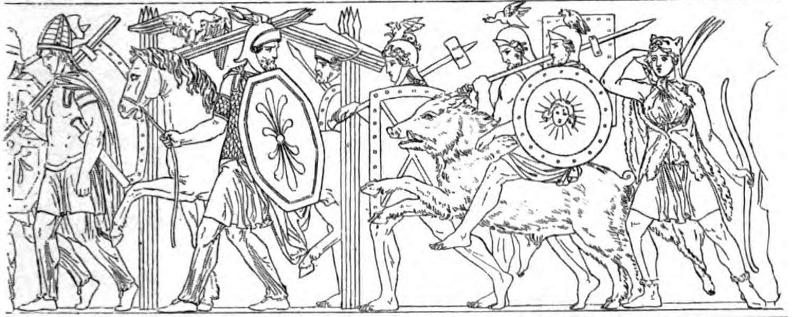 Freya's brother Frey, with the radiant image of the sun on his shield, races forth on his golden Boar, Gullinbursti, followed by Skadi (also identified as Gefion and Gerd) with an animal skin around her shoulders and about to draw an arrow from her quiver. 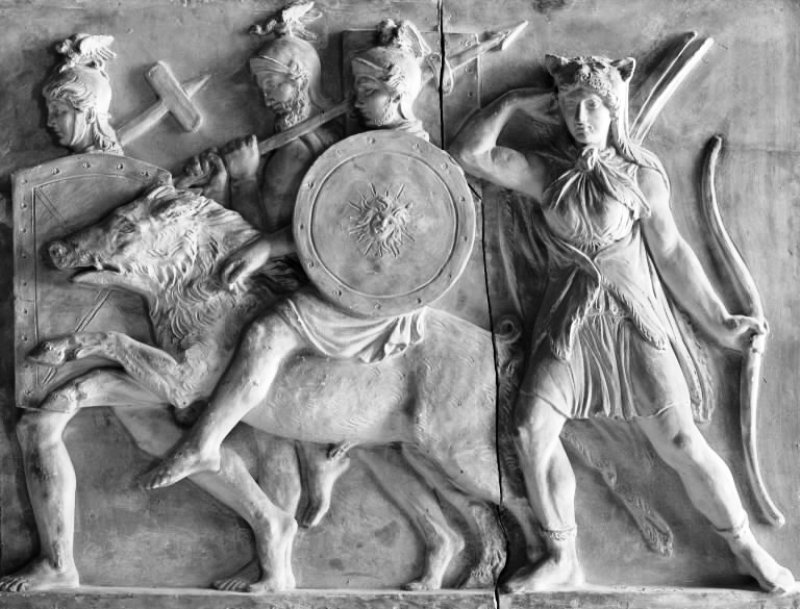 [Not shown] Behind them,the Einheries, the champions of the gods, press forward from the gates of Valhall, led by Starkodder. They are attended by the Valkyries, all radiant with glittering wings. [Not shown] On a rock we see the giant eagle Hräsvelgr, who drives the storm winds with its strong wing beats. From the mountains, a bunch of black elves swarm forth. To Hel, the redbrown cock crows out of the underworld. The elderly Vala raises her hand at the fulfillment of prophecy. |
||||
 The Frost-giants now hasten to attack the Aesir, led by the malignant Loki, depicted with horns and bat wings. In Loki's face, all the devilish delight of a Mephistopheles is expressed. The Jotuns are not fast enough for him, therefore, Loki pulls the lead giant impetuously by the hand. 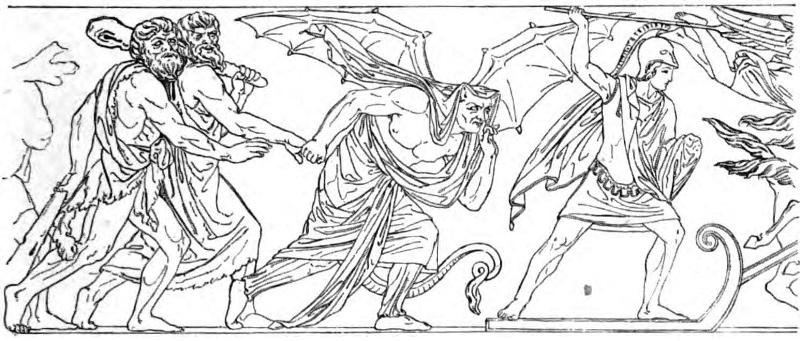 Loki's brood, the Midgard serpent and the Fenris Wolf have already appeared on the battlefield. Loki with the Giants storms toward the gods bridge. [Not shown] In front of them, the Vanir, who had once fought with the Aesir, now break out again against their old foes to fight the final battle. Njord, who was given to the Aesir as a hostage is now reunited with his family at the end of days. He leans back on his winged horse, held by one of the Vanir, to cast a stone against Heimdall, the guardian of Bifröst. |
||||
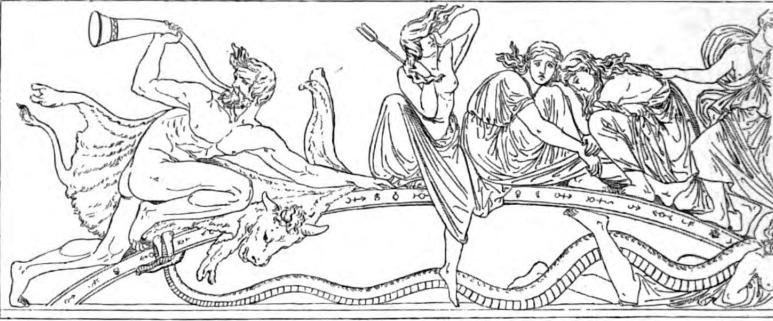 Heimdall kneels on the Rainbow Bridge and blows into his Gjallarhorn. Before him are grouped his nine mothers. The first, struck by an arrow shot by one of the Vanir, holds her hand in front of her face in pain. Several others are already entwined by the coils of the huge Midgard Serpent, who lifts its head up to fight with Thor. |
||||
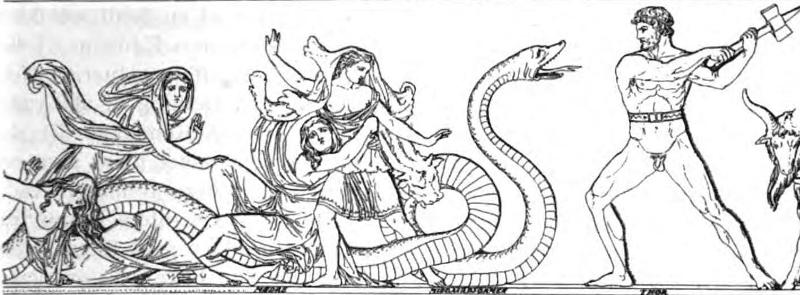 Thor swings his hammer Mjölnir against the Midgard serpent, his belt of strength buckled about him. Behind him, his carriage drawn by goats stands empty. 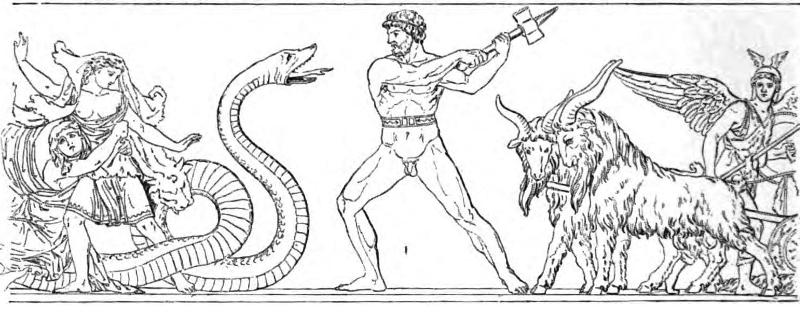 |
||||
Muspel (also identified as Surtur) leads the fire giants, Muspel's sons, swarming forth from their winged ship Naglfar with fiery torches. Muspel himself travels on a sledge, drawn by dragons. His head is veiled, but he has a flaming sword in his hand portending the old world's conflagragation. Freund depicts the fire giants as Negroes. |
||||
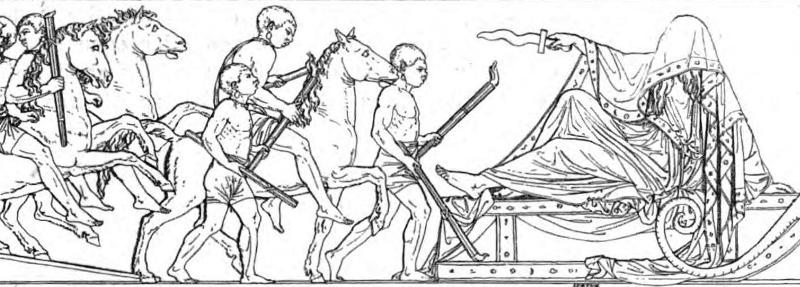 |
||||
At last, a new heaven and a new earth is at hand, under the mighty sceptre and purer reign of one greater than Odin. All-Father, enthroned on a world and drawn by symbolical griffins, comes gloriously, circled and garlanded by victories and shining planets. Three sphinxes in front of his seat refer to the mystery of his being. |
||||
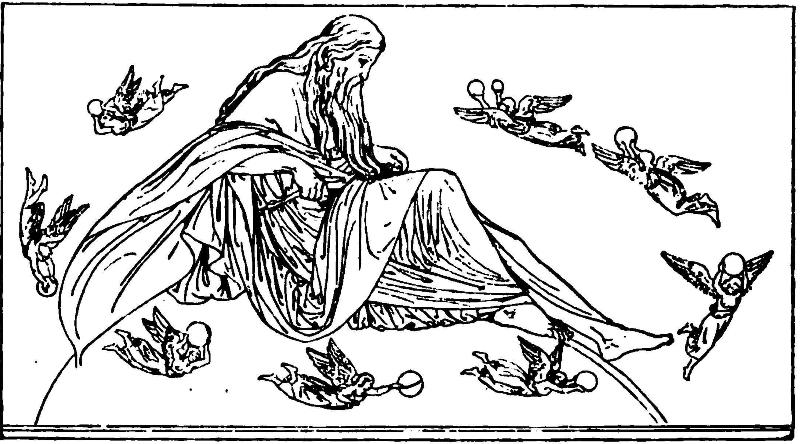 The Allfather |
||||
|
Freund was the first Danish sculptor to treat Norse mythology. Although his classical training prevented him from creating a truly Nordic work, he must be credited as one of the pioneer artists who sought to accurately portray the Nordic pantheon based on a knowledge of the ancient Norse sources. His understanding of the Edda may be misguided on certain points by Finn Magnusen's scholarly opinions and Adam Oehlenschläger's poetic liberties, but his grand vision of the mythology remains unmatched. |
||||
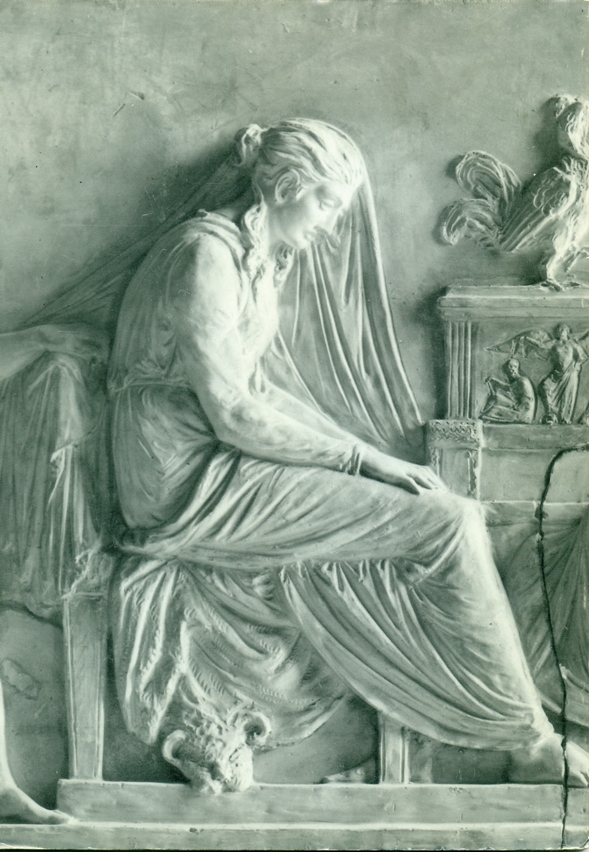 Frigg in mourning beside Odin's throne Hlidskjalf |
||||
[POPULAR RETELLINGS]
